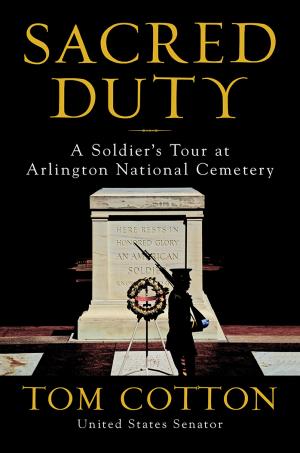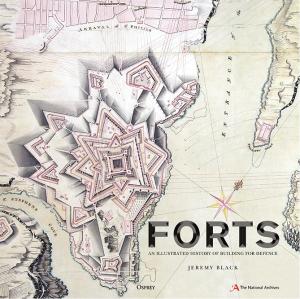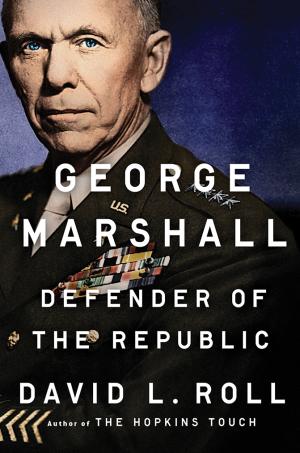August 2019 Book Reviews
August 2019 Book Reviews
War Game Narrative Holds Real-World Truths
The Senkaku Paradox: Risking Great Power War Over Small Stakes. Michael O’Hanlon. Brookings Institution Press. 272 pages. $27.99
By Maj. Nathan K. Finney
What are the chances the United States would go to war over small, local crises on its periphery, largely unimportant to its own interests, but vital to its core alliances around the world? This is the inherent question Michael O’Hanlon seeks to answer by developing solutions to such challenges in The Senkaku Paradox: Risking Great Power War Over Small Stakes.
As a senior fellow in foreign policy at the Brookings Institution who has tackled some of the thorniest national security issues for the past 15 years, O’Hanlon is well-positioned to assess and analyze the inherently challenging contemporary issues related to the reemergence of great-power competition among the U.S., Russia and China.
The Senkaku Paradox is a tight six chapters, built around assessing three plausible scenarios that pit local crises aimed at U.S. allies. One scenario focuses on Russian aggression against the Baltic States, and two scenarios pit China against U.S. allies and partners in the Western Pacific, including aggression against Japan by seizing the Senkaku Islands and an invasion of Taiwan, whose security is ambiguously assured by the U.S. in the Taiwan Relations Act of 1979.
These scenarios come directly from analysis done by DoD and research outlets such as the RAND Corp. In fact, as I was reading the book, it felt much like reading a war game in narrative form, polishing out the statistical and game mechanics and providing the key elements of truth.
However, while the scenarios used are sound, lumping a Taiwan invasion scenario with the other two is disingenuous. The Senkaku and Baltic scenarios would cause friction in key U.S. alliances with Japan and NATO, respectively. However, they do not hold the existential quality a Taiwan scenario holds within the Chinese Communist Party. The Senkaku and Baltic scenarios are almost as peripheral to Russia and China as they are to the U.S. A Taiwan scenario, if it occurred, would be a fundamentally different affair and should have skewed O’Hanlon’s policy prescriptions.
Because his prescriptions are not adjusted for the differences in the existential nature of one of the scenarios, they bring into question elements of his conclusions.
Despite the incongruity of including a Taiwan scenario in his analysis, O’Hanlon’s assessment of the other two scenarios, gaps in U.S. planning and overall regional strategies rings true. In particular, his assessment that planning for these scenarios is too near-term and military-focused is accurate, largely because of the way our executive departments are organized and the authorities each are provided.
If the U.S. could better integrate economic approaches in competition and conflict with near-peer and peer competitors, as O’Hanlon suggests (as well as other governmentwide functions like information operations), our plans would not only be more effective, but would likely be more executable as well.
Overall, he recommends strategies toward Russia and China that focus on the development of U.S. asymmetric military capabilities and economic incentives (and disincentives) to deter conflict altogether.
The Senkaku Paradox is a quick read that covers the basics of key defense scenarios and could serve as a decent entry point to those new to the topics. However, for those focused intensively on these issues, it is less useful.
O’Hanlon has done an admirable job collating and pulling together the last few years’ assessments by various organizations in DoD and research agencies such as RAND into a war game narrative that’s easy to digest.
With the exception of authority issues that must be resolved by the White House and Congress, readers of this book should know that most of O’Hanlon’s recommendations are being pursued or otherwise being employed by planners and strategists in the region.
Maj. Nathan K. Finney is a doctoral student at Duke University, North Carolina, under the Army Advanced Strategic Policy and Planning Program. Previously, he was the lead China planner at U.S. Army Pacific, Hawaii.
* * *
Studying the Inner Workings of The Old Guard
Sacred Duty: A Soldier’s Tour at Arlington National Cemetery. Tom Cotton. William Morrow. 320 pages. $28.99
By Col. Richard Swain, U.S. Army retired
Sacred Duty is an important and often moving book for soldiers, those who have been soldiers, and those who know and love soldiers. Indeed, it offers a unique insight into that ephemeral thing, the soul of the Army.
Author and U.S. Sen. Tom Cotton, then a recent graduate of Harvard Law School, enlisted as an Army infantry soldier in 2004. He was subsequently commissioned and graduated from Ranger School. He served as platoon leader in the 3rd U.S. Infantry Regiment (The Old Guard) from 2006 to 2007, in between combat tours as an infantry platoon leader in Iraq and as an operations officer for a Provincial Reconstruction Team in Afghanistan. His stated purpose in the book is “telling the story of the soldiers who dedicate themselves to our sacred duty of honoring those who served and died for our nation.”
He has accomplished that by introducing the reader to the lives and collective character of members of a distinguished Army regiment as they perform their sacred duties.
Nowhere is the nation’s appreciation of military service better expressed than in the final honors rendered the remains of deceased soldiers and veterans at Arlington National Cemetery. Army members, veterans, visitors to the cemetery and, especially, family members of those interred or about to be interred at Arlington will find the book a useful guide and explanation of the traditions of disciplined performance of duty by the officers and soldiers of the Army’s ceremonial unit, The Old Guard.
The 3rd U.S. Infantry Regiment is the Army’s oldest active-duty regiment. It was a long-serving line regiment through the 19th century, distinguishing itself in the War of 1812, the Indian Wars, the Mexican War, the Civil War, the Spanish-American War and the Philippine-American War. Sidelined on the Mexican border in World War I and deploying to Europe too late for much action in World War II, the regiment was demobilized in Europe, then reactivated at Fort Myer, Virginia, as a ceremonial unit in 1948.
The book includes a regimental history, notably including the unit’s role at the Pentagon on and after 9/11, and an account of the creation of the national cemetery on the grounds of Gen. Robert E. Lee’s home in Arlington, Virginia, by Union Army Quartermaster Gen. Montgomery Meigs.
Sacred Duty is framed by its first and last chapters. The first, “Coming Home,” describes in detail the regiment’s role in “dignified transfer” operations at Dover Air Force Base, Delaware. There, The Old Guard receives the remains of Army soldiers killed in combat and transfers them in the orderly process that will permit their timely interment, either at Arlington or at a site selected by the family.
Save for a brief conclusion, the book closes with a chapter on the regiment’s most public role as guardian of the Tomb of the Unknown Soldier. It also addresses the ceremonial role performed on public occasions for the commander in chief. Throughout, the author makes clear that priority is always given to memorial services for individual service members interred at Arlington.
The hallmark of the regiment is the importance given to perfect performance as a common duty, observed for both deceased private soldiers and commanders in chief.
Cotton goes into fine detail about the standards, training and practical requirements set for members of The Old Guard’s officers and soldiers. For example, he discusses the requirement to stand observed, entirely motionless, for 75 minutes, as well as the demanding uniform requirements that each member must master and practice daily.
These are the outward and visible signs of the personal and internal demand for perfect execution and sense of duty to every one of the fallen that marks The Old Guard and keeps the Sentinels at the Tomb of the Unknown Soldier marching faithfully in the harshest conditions.
Col. Richard Swain, U.S. Army retired, was a field artillery officer. From 2002 to 2007, he was professor of officership at the William E. Simon Center for the Professional Military Ethic at West Point.
* * *
High Walls Defined Early Warfare, Society
Forts: An Illustrated History of Building for Defence. Jeremy Black. Osprey Publishing. 224 pages. $50
By Edward G. Lengel
T he great British art historian Sir Kenneth Clark, considering the definition of the word “civilization” for his television series of the same name, said, “What is civilization? I don’t know … but I think I can recognize it when I see it.”
Much the same could be said about forts—their variety is practically immeasurable. Jeremy Black, in the preface to his work Forts: An Illustrated History of Building for Defence, considers them more or less according to their traditional definition as fixed structures of earth, wood, stone and metal intended for the defense—military or psychological—of geographic points and groups of people.
While his emphasis is primarily, albeit not exclusively, on forts in the Western world from antiquity to modern times, Black suggests “the history of fortification is a history of mankind, indeed a global history.”
Beautifully illustrated with maps, paintings and many color photographs, this book considers forts chronologically by century, largely from medieval times through the beginning of the 20th century. An introductory chapter gives ancient and other premedieval forts a brief nod, which is a shame given their importance for the development of human societies and the wealth of knowledge that archaeologists have uncovered.
Black then moves on to consider the role of forts in Western European warfare and territorial expansion, with an interesting digression on nonfixed wagon forts as they were used in other parts of the world.
Black’s central focus is on fortifications and siegecraft in Western Europe from the 17th and 18th centuries—appropriately so, since this is the period when forts came to define warfare and even aspects of society in that part of the world. He considers a variety of factors, from French military engineer Sébastien Le Prestre de Vauban’s celebrated star forts, to garrisoning logistics, weapons technology and the close relationship between forts and international politics and diplomacy.
Drawing on his own scholarly work in the field, Black describes the role of forts in European global expansion through the Americas and Asia, and looks at the domestic development of fortresses during this period in China, Persia and India.
By the 19th century, forts were clearly on the decline as instruments of warfare and statecraft. While they still played dramatic, if not decisive, roles in conflicts such as the American Civil War of 1861–65, improvements in weapons technology, particularly artillery, rendered forts increasingly obsolescent.
Even as late as the 20th century, however, forts had significant roles to play on the battlefield—even if only psychologically—at places like Liège and Eben-Emael, both in Belgium; Gallipoli, Turkey; Verdun, France; and France’s Maginot Line. Black’s narrative basically ends in 1918, with Verdun meriting barely a mention.
Forts: An Illustrated History presents an attractive and erudite survey of its subject, although a more accurate subtitle might have specified that it is mostly about Western forts from the 16th through the 19th centuries.
To cover everything in a book of this nature would of course have been impossible. It might have been worthwhile to add a concluding chapter considering the enduring global role of forts, restored or ruined, as cultural legacies—symbols, museums, or subjects and works of art—in their own right.
Although they are militarily obsolete, forts still loom all around us and have significant roles to play in human culture.
Edward G. Lengel is an independent military historian. He serves as an adviser to the World War I Centennial Commission and is the author of Never in Finer Company: The Men of the Great War’s Lost Battalion.
* * *
Enemies Unite to Rescue Equestrian Captives
Ghost Riders: When US and German Soldiers Fought Together to Save the World’s Most Beautiful Horses in the Last Days of World War II. Mark Felton. Da Capo Press. 304 pages. $27
By David R. Dorondo
For more than 400 years, the Spanish Riding School of Vienna has trained the magnificent white horses known as Lipizzaners in intricate, ballet-like movements of classical dressage set to music. Justly famous for their beauty and conformation, Lipizzaners descend from Iberian stock crossed over the centuries with Arabian, Neapolitan and Central European Karst horses. Used in both peace and war, by the 20th century, the Lipizzaner had become a vitally important cultural icon.
Mark Felton’s Ghost Riders: When US and German Soldiers Fought Together to Save the World’s Most Beautiful Horses in the Last Days of World War II recounts the remarkable efforts undertaken in the chaos of early 1945 to save the breed from possible extinction. The stallions from Vienna and the critically important brood mares and foals (and further stallions) from western Czechoslovakia were removed before the arrival of the Russian Red Army.
Felton’s book complements a relatively small body of work on the subject that includes Stephan Talty’s Operation Cowboy: The Secret American Mission to Save the World’s Most Beautiful Horses in the Last Days of World War II and Elizabeth Letts’ The Perfect Horse: The Daring U.S. Mission to Rescue the Priceless Stallions Kidnapped by the Nazis.
In Felton’s case, he focuses his principal attention on the ultimately successful mission of the U.S. Army’s 2nd Cavalry Group (Mechanized). The 2nd Cavalry Group was established in 1943 and landed in Normandy in July 1944. It fought its way across Europe and, in early 1945, provided flank protection for Gen. George S. Patton Jr.’s Third Army as it advanced generally southward along, and sometimes to the east of, the Czechoslovakian border.
Describing these events in crisp prose, Felton recounts how the 2nd Cavalry’s commanding officer (and passionate horseman) Col. Charles Hancock “Hank” Reed employed the group’s 42nd Cavalry Reconnaissance Squadron (Mechanized) and its hard-charging company grade officers, NCOs and troopers to build a task force to liberate Allied POWs and salvage a trove of German intelligence documents.
Along the way, he wangled permission from Patton himself—a fellow cavalryman, polo player and 1912 Olympic pentathlete—to rescue the horses after being informed through his intelligence units that they were at a stud farm located in the nearby Sudeten town of Hostau (now Hostoun, the Czech Republic). The horses were in danger of being captured and probably eaten, either by Czech partisans or oncoming Red Army troops.
Recounting the rescue of the horses, Felton details the fascinating fact that, in addition to liberated POWs and Cossacks who had served to that point in the German Army, German soldiers fought alongside the U.S. cavalrymen in repelling repeated attacks by German detachments. These attacks included an assault by a battalion of the SS Panzer Grenadier Regiment Deutschland. In all, some 219 Lipizzaners were transported back to American lines, either on improvised horse carriers or by being herded out by U.S. troopers, fleeing German soldiers or Cossack outriders. Between these animals and those evacuated at the same time from Vienna, one of the great equine breeds survived the maw of war.
Felton provides a well-paced, neatly crafted narrative. One or two editorial infelicities mar the story, but the only substantive curiosity is Felton’s honestly admitted, occasional willingness to create dialogue to provide atmosphere. For readers interested in the U.S. Cavalry, World War II in Europe and, of course, equestrian history, Ghost Riders is worth reading.
David R. Dorondo is associate professor of history at Western Carolina University. His recent works include Riders of the Apocalypse: German Cavalry and Modern Warfare, 1870–1945.
* * *
General Served Quietly; Remembered Well
George Marshall: Defender of the Republic. David L. Roll. Dutton Caliber. 704 pages. $34
By Michael Stephenson
In George Marshall: Defender of the Republic, a terrific new biography that draws on material unavailable to previous biographers, author David L. Roll makes the point that the general’s “significance is fading from public memory.” This is true partly because the virtues and values Marshall embodied have fallen from favor.
Perhaps Marshall is considered a little too stiff-necked, a bit old-fashioned in that he was untouched by vanity or greed for money and fame. His moral core was adamantine and his integrity inaccessible to cheap ambition and fake patriotism. He was austere, even aloof (hardly anyone called him by his first name or he by theirs). He was governed by self-control, humility, honor and duty.
Winston Churchill called him “the noblest Roman of them all,” and Sam Rayburn, the House majority leader when Marshall was appointed Army chief of staff in 1939, said of him: “Let us remember that we are in the presence of a man who is telling the truth.”
Marshall’s military and diplomatic genius first showed itself most powerfully in World War I. As a newly appointed operations officer of the 1st Infantry Division, he established an extraordinary reputation for organizational competence and an ability to navigate the minefields between America’s French and British allies, which brought him the powerful mentorship of Gen. John J. Pershing, commander in chief of the American Expeditionary Forces.
Marshall understood that military strategy could not be successfully implemented without the political and diplomatic skills to make it reality. To this end, alliances had to be built and nurtured even when relationships frayed under intense pressure. And he was to use that understanding as chief of staff of the U.S. Army in World War II, primarily in building and training an American Army from the one he inherited (as Roll points out, then something in size akin to that of Bulgaria’s or Portugal’s) to one of more than 7 million who would help rescue the world from the evil of fascism.
The neglect of Marshall today might also be partially explained by the fact that he was never a combat commander and perhaps lost out in the public relations stakes of history to generals such as George S. Patton Jr. and Douglas MacArthur, who were flashier self-promoters.
Marshall’s vision of the “big picture” was informed by a staggering grasp of bewilderingly complicated detail. He was like an architect of some huge building who also knows how to lay bricks. He shaped and coordinated the stupendously intricate Allied machinery that fought World War II and shortly after war’s end, as secretary of state, helped craft what is probably the greatest act of generosity one nation has ever extended to others.
The Marshall Plan (characteristically, he never referred to it as such) provided the financial seed corn to a devastated Europe. It was a stroke of the greatest imagination motivated by intelligent self-interest. By giving those wrecked countries hope and energy, America created a bulwark against communist Russia. It was not a matter of charity, but an issue of national security and one that repaid America’s investment handsomely.
This impressive biography looks back on that and the whole honor roll of Marshall’s other extraordinary achievements comprehensively and skillfully.
Marshall’s instructions for his funeral—he died in 1959 at age 78—stated: “Bury me simply like any ordinary officer of the U.S. Army who has served his country honorably. No fuss. … And above everything, do it quietly.” It is a reminder of how a prince of the republic should comport himself.
Michael Stephenson is the author of several books of military history, the most recent of which is The Last Full Measure: How Soldiers Die in Battle.






